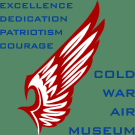 Summer in Texas brings daytime temperatures around 40C (over 100 degrees Fahrenheit). A recent mild "cold" front passed through and the temperature "only" reached about 34C (around 93F). Although our aircraft are in hangars and out of the direct sun, working on them in the heat is still uncomfortable. With the realization that there will probably not be any cooler days left this summer, we jumped in to do some avionics work in the Mi-2.
Summer in Texas brings daytime temperatures around 40C (over 100 degrees Fahrenheit). A recent mild "cold" front passed through and the temperature "only" reached about 34C (around 93F). Although our aircraft are in hangars and out of the direct sun, working on them in the heat is still uncomfortable. With the realization that there will probably not be any cooler days left this summer, we jumped in to do some avionics work in the Mi-2.We are fortunate to have translated factory manuals, but even so, it can be challenging to read schematics and technical documents originated in a different language with different drawing conventions. Previous experience and perseverance helps. While the main DC buses are below the instrument panel, the breaker panels they feed are in the overhead with power running from there to the soviet style avionics boxes located in a compartment at the rear. Our more modern equipment will be up front, so some wiring has to be changed. The wires dangling in this picture will assist in adding modern radios to the panel while maintaining as much of the original look and feel of the aircraft as possible.
Of course the day would not be complete if someone didn't want to fly the aircraft when the radio guy left some panel open. Fortunately crew chief Phil knows the drill and helps to co-ordinate the program, buttoning things up and checking things as necessary. The normal shop schedule is to work around flying events and to leave each aircraft in flying status as much as possible. At the end of this day, Bord 211 was back in flight status with power going to a new radio box.



No comments:
Post a Comment